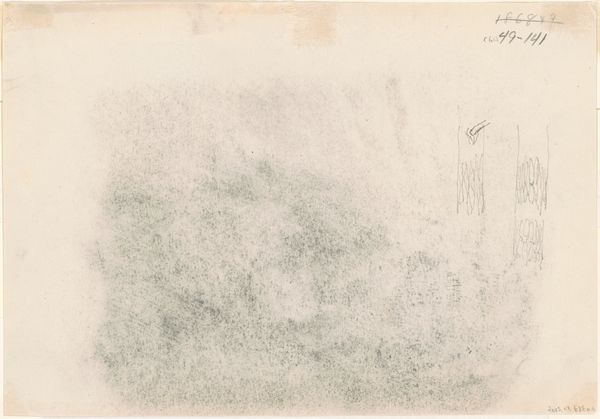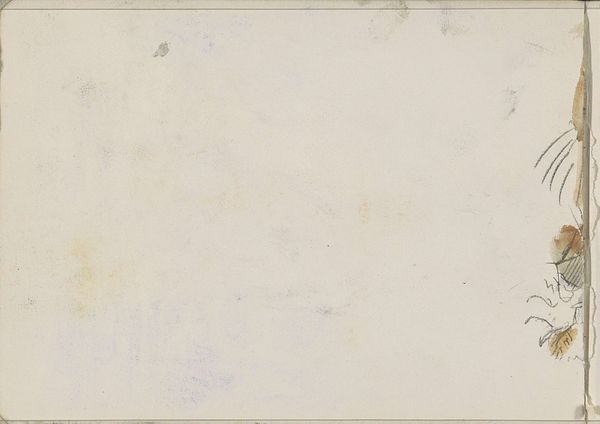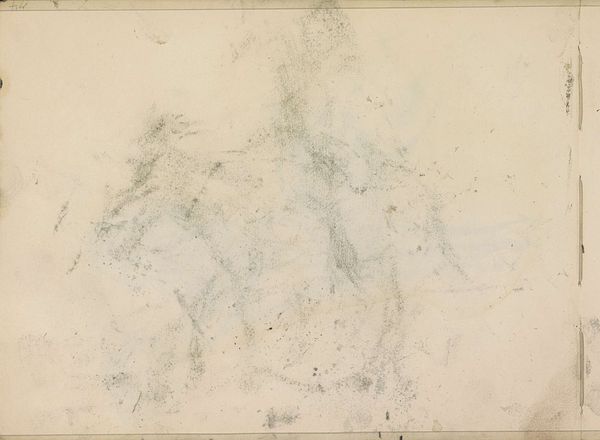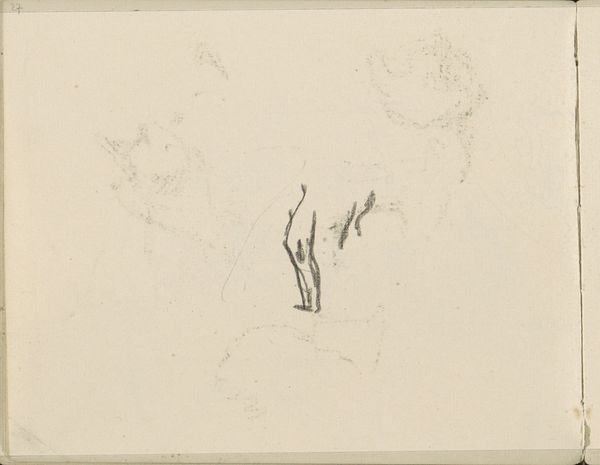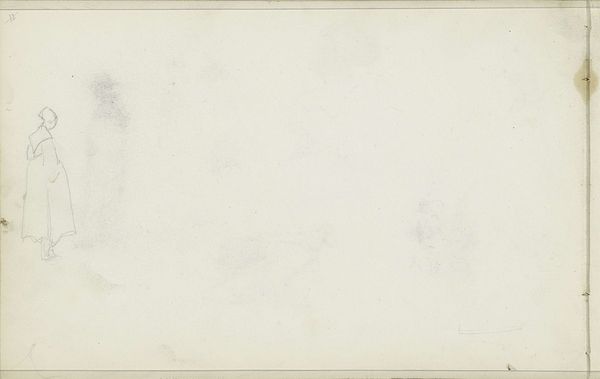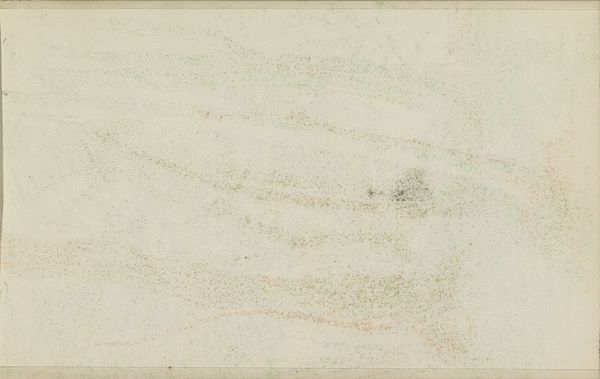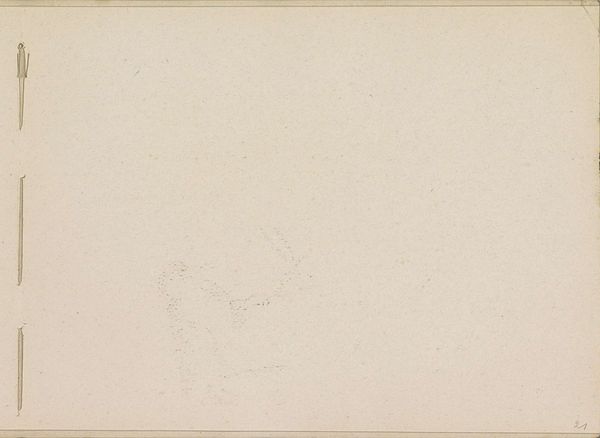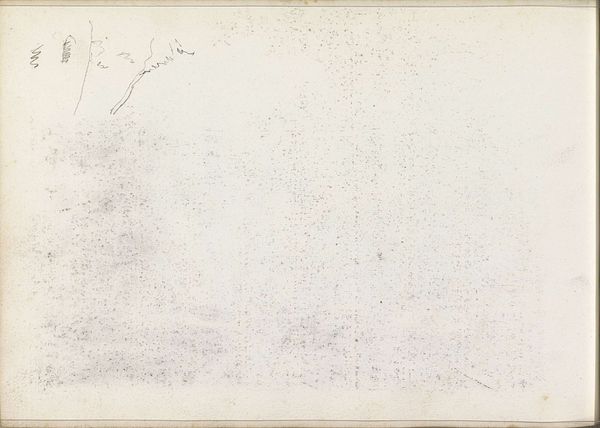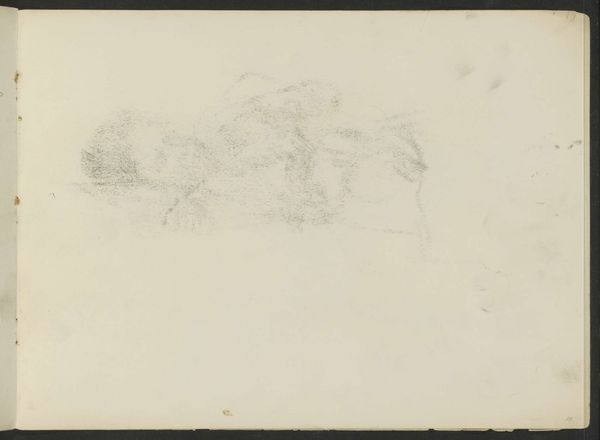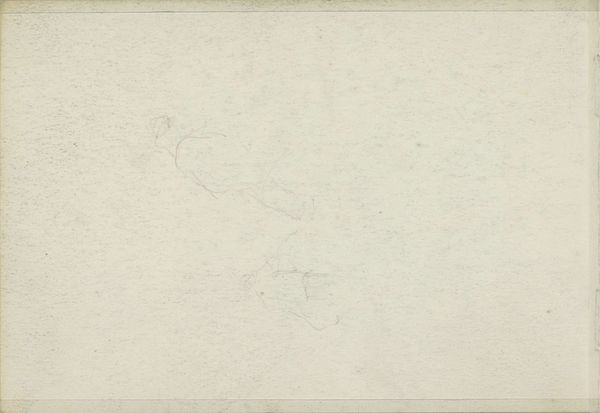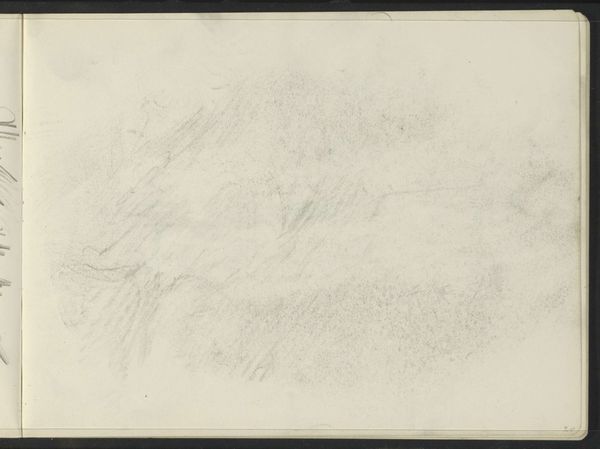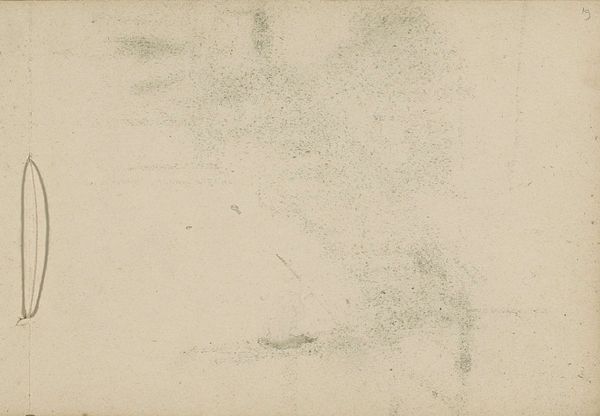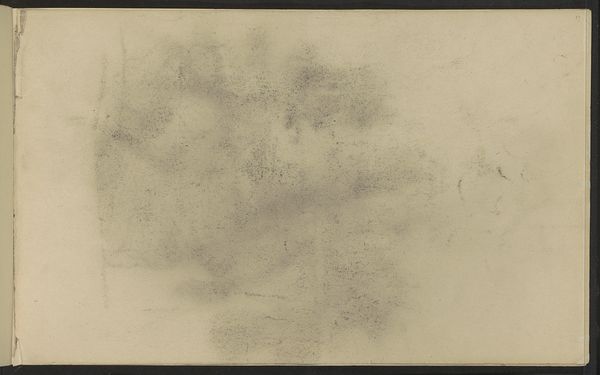
Copyright: Rijks Museum: Open Domain
Editor: This watercolor drawing, "Abklatsch van blad 9 verso" by Willem Witsen, dates back to somewhere between 1915 and 1920. It’s currently held at the Rijksmuseum. The ghostly shapes and pale colors create a really ethereal feeling for me, almost dreamlike. What do you see in this piece, looking at it through a historical lens? Curator: I see a direct reflection of the artistic climate in the early 20th century. Given its title suggests that this is an accidental impression or "blot" on a verso sheet, Witsen here has presented the reverse impression as a drawing. Consider the period, and you’ll note that the embrace of abstraction and the exploration of chance encounters was rising. What would cause an artist with such a conventional-sounding name decide to present an incomplete art work such as this? What do you know about that environment that might clarify it? Editor: Well, I know impressionism focused on capturing fleeting moments and subjective perceptions… perhaps he was interested in the artistic possibilities found within a traditionally discarded “mistake”? Curator: Precisely! The turn of the century audience started questioning what art *could* be, and importantly *who* got to decide. Institutions like museums began to grapple with their role. Something like this that challenges traditional artistic expression invites the public to reconsider those same questions about beauty and artistic intent. This work seems unfinished or even accidental. But did the institution give more public awareness for "Abstract" art? Editor: That’s a really good point – framing this as a deliberate artistic choice suddenly makes the artwork so much more radical for its time. So, something that looks incidental could have pushed cultural boundaries just by its institutional validation! Curator: Exactly. Art exists within systems; considering historical contexts lets us see how artists both responded to, and shaped, societal values through institutional framework. Editor: That’s definitely shifted my perspective. I came in thinking it was just a pretty abstraction, but now I understand the artwork's engagement in broader art world debates! Curator: Glad to hear it, sometimes it's only with historical perspective that we can fully see a drawing such as this as an actual piece of artwork with so much baggage.
Comments
No comments
Be the first to comment and join the conversation on the ultimate creative platform.
